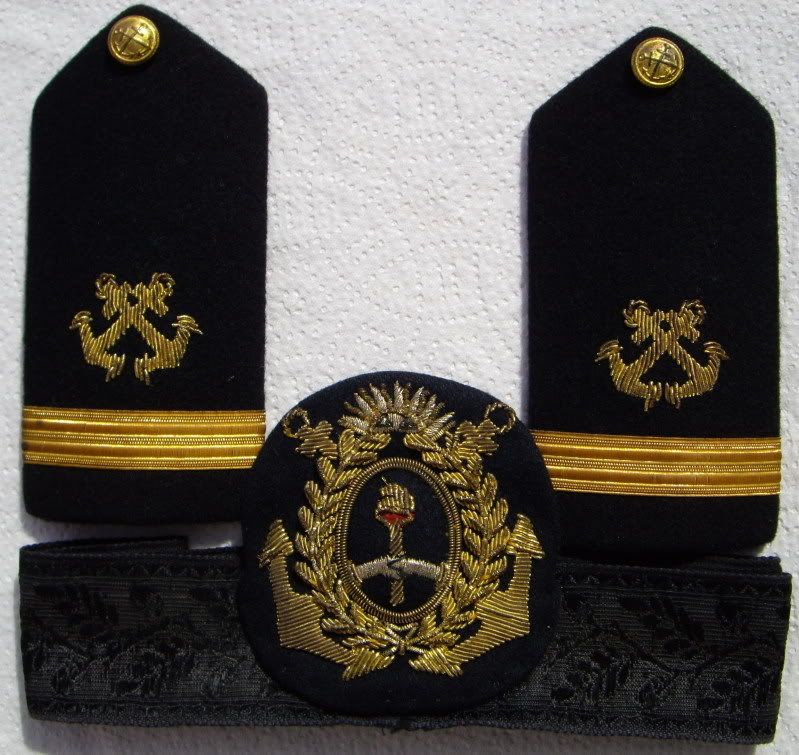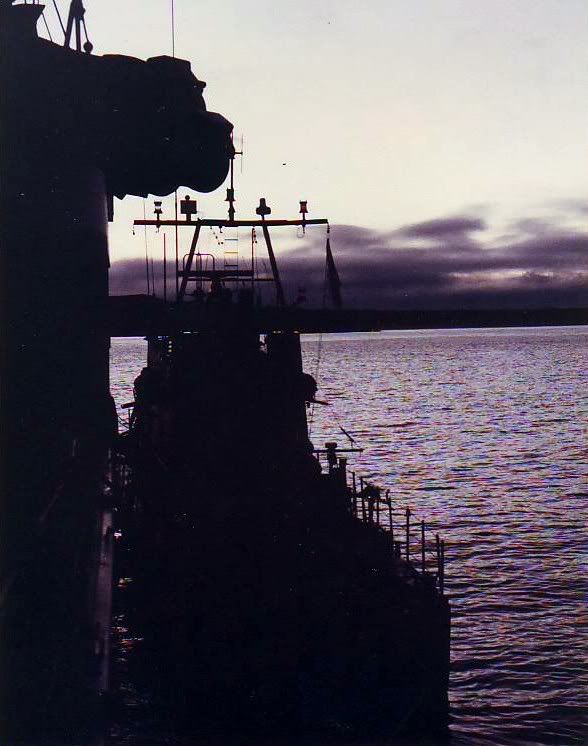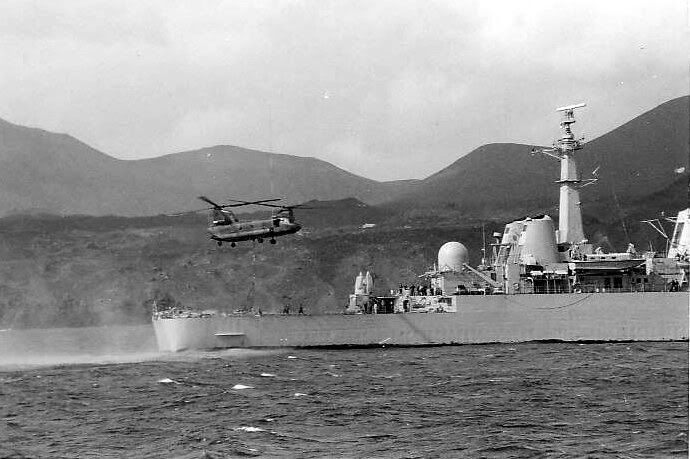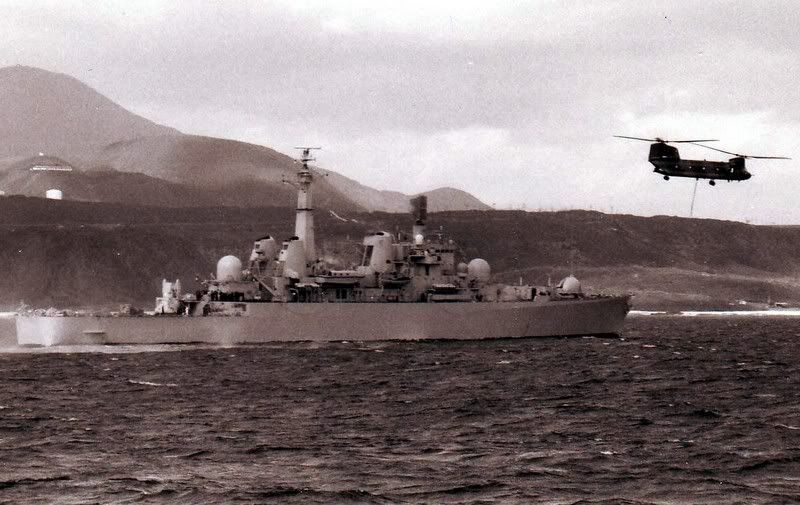That is the info we were looking for Ken , there is a Report from Daniel , Engenier who told us that those lights lasted long time -
At Military Photos " Royal" says that Artillery Grounds or Mortar Grounds with iluminating devise atached to parachute would last a minute or two , that they should be Naval Grounds , the one you are describing now -
Tell us what went on the night of June 06 ?
Regards Enrique
HMS Cardiff and HMS Yarmouth detached from the task force to conduct naval gunfire support on the Hoya Chasco (Bluff Cove) gun line at 20:00 (GMT) 5 June. We were delayed because Yarmouth had a defect with her 4.5" gun and it had to be repaired. Because of the delay, we transited at great speed and after passing through the area of the exocet zone we arrived at the gun line near Fitzroy at around 03:00.
I was not on duty in the operations room so I went to the bridge to watch the action. I think our target was Mount Challenger.
I climbed the ladders to the bridge passing through the officers' accommodation that was illuminated with red lighting so no noticeable light enters the bridge area. I poked my head through the bridge hatch and said " Officer of the watch sir, permission to enter the bridge" "Yes please,” replied Lt. Wrigley. Lt. Wrigley was a good officer. He had a long beard and warm friendly eyes; he was gentle by nature and very much an academic. I never heard him shout or get angry with any sailor.
It was a very dark night with no natural or man-made light. I groped my way across the bridge with my arms outstretched like a blind man. The personnel on duty on the bridge could see me clearly as their eyes were accustomed to the dark and I must have made a strange figure on the bridge that night. Eventually, I reached the port windows. With excitement and fascination I watched the shooting through night sight binoculars. The gun would explode with a tremendous 'bang' and a large flame would emerge from the invisible barrel. After what seemed to be a long time, the shells exploded in the distance in a small dot of green.
At around 04:00 (GMT) the speaker on the bridge (command open line) erupted in a cacophony of verbal instructions. The surface team had detected an unidentified but assumed hostile air contact and the AAWO (Lt.Cdr Welch) and Captain Harris were communicating on command open line. I do not exactly remember what was said but it was a mixture of the following:
"Air contact bearing..."
"What is it?...."
"Seadart..."
Etc. etc.
And finally Captain Harris: "Engage with Seadart".
There was silence for a moment then the unmistakeable sound of the Seadart launcher coming to life. A whirring sound like a robot then two white war shot missiles appeared and rotated towards the target. The aircraft, unaware of Cardiff is just minutes away from destruction.
"Take cover" shouted the OOW. I dive for cover below the windows as a Seadart leaves the launcher. Our dark world is illuminated uncomfortably. The dark is safety and now Cardiff is exposed for all to see. HMS Yarmouth had been illuminated by enemy fire control radar earlier and now I feel vulnerable. The missile screams skyward, how high is this aircraft? I think to myself. I follow the flight of the missile as it races towards its victim and explode in a huge green fireball. I shout to the OOW that I have seen the missile detonate and the OOW informs the Operations Room "Detonation seen".
We have engaged the elusive C130. There was some cheering but the captain ordered everyone to be quiet. About one hour later the surface team detected four small surface contacts closing Hoya Chasco (Bluff Cove). Cardiff and Yarmouth close to investigate. Captain Harris ordered the contacts to be illuminated with star shells. The contacts were identified as four landing craft carrying hundreds of Scots Guards.
Neither Cardiff nor Yarmouth was informed that a friendly gazelle was operating in the area or that British troops were landing at Hoya Chasco (Bluff Cove) that night. Four British servicemen were killed when Cardiff engaged their aircraft with Seadart.
Captain Harris never told us that we had shot down one of our own aircraft. I simply read about it many years later in the tabloid newspaper the 'Sun'. It was a devastating blow for me. I had seen the missile hit the Gazelle and had actually cheered the deaths of my fellow countrymen. I felt ashamed of myself and often in the quiet moments of the early hours when you are just waking and alone with your thoughts I think of these men and cry.
In 2007 I spoke with the son of the Gazelle pilot, Paul Griffin. He was desperate to understand what happened to his father and cannot accept that no blame has been apportioned to any individual or group. I could say nothing to alleviate his pain. May God be with him.
It is ironic that I have shared my feelings about this incident with my old enemy. I have not done so with my family or fellow countrymen.
Thank you for letting me do this.
May they Rest In Peace.
SAMA82 Christopher
SAMA82 Simon
SAMA82 Michael
SAMA82 John












